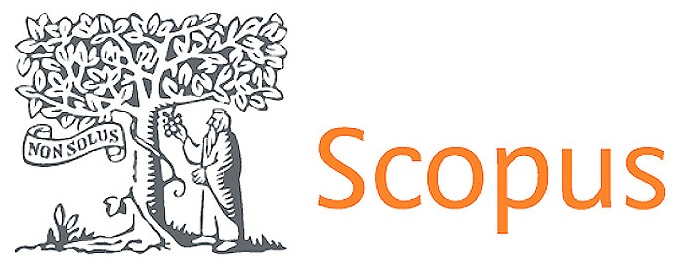Conceptual Metaphors and Image Schemas in the conceptualization of Neoliberalism and Socialism in Presidential Inauguration Speeches. An infometric approach
DOI:
https://doi.org/10.56294/sctconf2024.1173Keywords:
conceptual metaphor, image schema, political discourse, neoliberalism, socialism, polarizationAbstract
Introduction: This study explores how neoliberalism and socialism are conceptualized through image schemas in political discourse. These conceptual frameworks are best analyzed using the Conceptual Metaphor Theory, specifically its analytical tool of image schemas. The metaphorical structures identified in the analyzed texts reflect a polarized stance, particularly opposing right-wing ideologies. Neoliberalism is metaphorically framed as something negative, associated with darkness, evil, and positioned downward. Objective: To analyze how neoliberalism and socialism are conceptualized in political discourse using image schemas. Methods: The study employed a bibliographic review to collect and analyze political texts, focusing on metaphorical language. Articles were selected based on relevance and discarded if they lacked clear metaphorical usage or did not align with the research focus. The analysis utilized the Conceptual Metaphor Theory to identify image schemas in the discourse. Development: The study highlights that the conceptual metaphors present in political discourse shape public perception by framing neoliberalism as inherently negative, using metaphors of darkness and downward movement. Conversely, socialism is portrayed through positive metaphors, symbolizing light and upward movement. This metaphorical polarization reflects broader societal and political divisions, where language reinforces ideological opposition. Conclusions: The study concludes that political discourse consistently uses conceptual metaphors to portray neoliberalism negatively and socialism positively. These metaphors contribute to reinforcing ideological divisions, emphasizing the role of language in shaping political perspectives. The objective of understanding these conceptualizations was met through the identification of recurring metaphorical patterns
References
1. Lakoff G, Johnson M. Metaphors we live by [Internet]. Chicago, IL: University of Chicago Press; 2003 [citado 2024 Jun 27]. 256 p. Disponible en: https://press.uchicago.edu/ucp/books/book/chicago/M/bo3637992.html
2. Semino E. Metaphor in discourse [Internet]. Cambridge: Cambridge University Press; 2008 [citado 2024 Jul 1]. Disponible en: https://www.academia.edu/553138/Semino_E_2008_Metaphor_in_Discourse_Cambridge_Cambridge_University_Press
3. Kövecses Z. Metaphor and culture. 2010;2:197-220.
4. Sharifian F. Cultural linguistics: cultural conceptualisations and language. John Benjamins Publishing Company; 2017. 191 p. DOI: https://doi.org/10.1075/clscc.8
5. Lakoff G. The contemporary theory of metaphor. En: Ortony A, editor. Metaphor and thought. Cambridge: Cambridge University Press; 1993. p. 202-51. DOI: https://doi.org/10.1017/CBO9781139173865.013
6. Rhodes CL, Lawyer CLSR. Papers from the regional meeting, Chicago Linguistic Society. Chicago Linguistic Society; 1968. 746 p.
7. Lakoff G. Conceptual metaphor theory in English language teaching: developing EFL learners' metaphor awareness [Internet]. 2016 [citado 2024 Jul 1]. Disponible en: https://www.researchgate.net/publication/368707237_CONCEPTUAL_METAPHOR_THEORY_IN_ENGLISH_LANGUAGE_TEACHING_DEVELOPING_EFL_LEARNERS'_METAPHOR_AWARENESS
8. Talmy L. Force dynamics in language and cognition. Cognitive Science. 1988;12(1):49-100. DOI: https://doi.org/10.1016/0364-0213(88)90008-0
9. Lakoff G. Women, fire, and dangerous things: what categories reveal about the mind [Internet]. Chicago, IL: University of Chicago Press; 1990 [citado 2024 Jul 1]. 632 p. Disponible en: https://press.uchicago.edu/ucp/books/book/chicago/W/bo3632089.html
10. Lakoff G. Women, fire, and dangerous things: what categories reveal about the mind [Internet]. Chicago, IL: University of Chicago Press; 1990 [citado 2024 Jun 27]. 632 p. Disponible en: https://press.uchicago.edu/ucp/books/book/chicago/W/bo3632089.html
11. Johnson M. The body in the mind: the bodily basis of meaning, imagination, and reason. Chicago, IL: University of Chicago Press; 1987. xxxviii, 233 p. DOI: https://doi.org/10.7208/chicago/9780226177847.001.0001
12. Ritchie LD. Metaphor [Internet]. Cambridge: Cambridge University Press; 2013 [citado 2024 Jun 27]. (Key Topics in Semantics and Pragmatics). Disponible en: https://www.cambridge.org/core/books/metaphor/072D04A82F23FE3F2FF14ACA73F4FDB4
13. Charteris-Black J. Corpus approaches to critical metaphor analysis. Springer; 2004. 271 p. DOI: https://doi.org/10.1057/9780230000612
14. Bobbio N. Left and right: the significance of a political distinction. Chicago, IL: University of Chicago Press; 1996. 148 p.
15. Jackendoff R, Aaron D. Review of more than cool reason: a field guide to poetic metaphor. Language. 1991;67(2):320-38. DOI: https://doi.org/10.1353/lan.1991.0079
16. MacArthur FM. Metaphor in use [Internet]. John Benjamins Publishing Company [citado 2024 Jun 27]. Disponible en: https://benjamins.com/catalog/hcp.38
17. Braithwaite I, Callender T, Bullock M, Aldridge RW. Automated and partly automated contact tracing: a systematic review to inform the control of COVID-19. Lancet Digital Health. 2020;2(11). DOI: https://doi.org/10.1016/S2589-7500(20)30184-9
18. Afnan MK, Khan N, Lee MY, Imran AS, Sajjad M. School of the future: a comprehensive study on the effectiveness of augmented reality as a tool for primary school children’s education. Appl Sci. 2021;11(11):5277. DOI: https://doi.org/10.3390/app11115277
19. Figar V. Analysis of conceptual metaphors in the political discourse of daily newspapers: structure, function, and emotional appeal (Ma Thesis) [Internet]. Rochester, NY; 2013 [citado 2024 Jun 27]. Disponible en: https://papers.ssrn.com/abstract=2464713 DOI: https://doi.org/10.2139/ssrn.2464713
20. Van Dijk. Contemporary critical discourse studies. En: Bloomsbury Academic; 2014 [citado 2024 Jun 27]. Disponible en: http://www.bloomsburycollections.com/book/contemporary-critical-discourse-studies
21. Romero-Trillo J. The representation of liminality conflicts in the media. J Multicultural Discourses. 2011;6:143-58. DOI: https://doi.org/10.1080/17447143.2010.545412
22. Zizek S. First as tragedy, then as farce [Internet]. Verso; 2009 [citado 2024 Jul 1]. Disponible en: https://www.versobooks.com/en-gb/products/2100-first-as-tragedy-then-as-farce
23. Diamond J. Status and power in verbal interaction [Internet]. John Benjamins Publishing Company [citado 2024 Jun 27]. Disponible en: https://benjamins.com/catalog/pbns.40
24. Sharp G. From dictatorship to democracy: a guide to nonviolent resistance. Profile Books; 2011. 81 p.
25. Soares da Silva A, Cuenca M, Romano M. The conceptualisation of austerity in the Portuguese, Spanish and Irish press. 2017. p. 345-68. DOI: https://doi.org/10.1007/978-981-10-4056-6_16
26. Jensen MM. Augusto Soares da Silva: Pluricentricity: language variation and sociocognitive dimensions. Cogn Linguist. 2016;27(3):441-6 DOI: https://doi.org/10.1515/cog-2016-0049
Published
Issue
Section
License
Copyright (c) 2024 Sara Nidhya Camacho Estrada, Wilber Orlando Romero Villarroel, Edison Gerardo Llerena Medina, Luis Efraín Velasteguí López (Author)

This work is licensed under a Creative Commons Attribution 4.0 International License.
The article is distributed under the Creative Commons Attribution 4.0 License. Unless otherwise stated, associated published material is distributed under the same licence.



